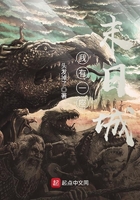Of course you do, little man. A few fine epithets take your fancy far more than a little common sense and common humility; but in that you are no worse than some of your elders. So now for the exquisite shapes and glorious colours. I have never seen them; though I trust to see them ere I die. So what they are like I can only tell from what I have learnt from Mr. Darwin, and Mr. Wallace, and Mr. Jukes, and Mr. Gosse, and last, but not least, from one whose soul was as beautiful as his face, Lucas Barrett,-- too soon lost to science,--who was drowned in exploring such a coral-reef as this stone was once.
Then there are such things alive now?
Yes, and no. The descendants of most of them live on, altered by time, which alters all things; and from the beauty of the children we can guess at the beauty of their ancestors; just as from the coral-reefs which exist now we can guess how the coral-reefs of old were made. And that this stone was once part of a coral-reef the corals in it prove at first sight.
And what is a coral-reef like?
You have seen the room in the British Museum full of corals, madrepores, brain-stones, corallines, and sea-ferns?
Oh yes.
Then fancy all those alive. Not as they are now, white stone: but covered in jelly; and out of every pore a little polype, like a flower, peeping out. Fancy them of every gaudy colour you choose. No bed of flowers, they say, can be more brilliant than the corals, as you look down on them through the clear sea.
Fancy, again, growing among them and crawling over them, strange sea-anemones, shells, star-fish, sea-slugs, and sea-cucumbers with feathery gills, crabs, and shrimps, and hundreds of other animals, all as strange in shape, and as brilliant in colour. You may let your fancy run wild. Nothing so odd, nothing so gay, even entered your dreams, or a poet's, as you may find alive at the bottom of the sea, in the live flower-gardens of the sea-fairies.
There will be shoals of fish, too, playing in and out, as strange and gaudy as the rest,--parrot-fish who browse on the live coral with their beak-like teeth, as cattle browse on grass; and at the bottom, it may be, larger and uglier fish, who eat the crabs and shell-fish, shells and all, grinding them up as a dog grinds a bone, and so turning shells and corals into fine soft mud, such as this stone is partly made of.
But what happens to all the delicate little corals if a storm comes on?
What, indeed? Madam How has made them so well and wisely, that, like brave and good men, the more trouble they suffer the stronger they are. Day and night, week after week, the trade-wind blows upon them, hurling the waves against them in furious surf, knocking off great lumps of coral, grinding them to powder, throwing them over the reef into the shallow water inside. But the heavier the surf beats upon them, the stronger the polypes outside grow, repairing their broken houses, and building up fresh coral on the dead coral below, because it is in the fresh sea- water that beats upon the surf that they find most lime with which to build. And as they build they form a barrier against the surf, inside of which, in water still as glass, the weaker and more delicate things can grow in safety, just as these very Encrinites may have grown, rooted in the lime-mud, and waving their slender arms at the bottom of the clear lagoon. Such mighty builders are these little coral polypes, that all the works of men are small compared with theirs. One single reef, for instance, which is entirely made by them, stretches along the north-east coast of Australia for nearly a thousand miles. Of this you must read some day in Mr. Jukes's Voyage of H.M.S. "Fly." Every island throughout a great part of the Pacific is fringed round each with its coral-reef, and there are hundreds of islands of strange shapes, and of Atolls, as they are called, or ring-islands, which are composed entirely of coral, and of nothing else.
A ring-island? How can an island be made in the shape of a ring?
Ah! it was a long time before men found out that riddle. Mr. Darwin was the first to guess the answer, as he has guessed many an answer beside. These islands are each a ring, or nearly a ring of coral, with smooth shallow water inside: but their outsides run down, like a mountain wall, sheer into seas hundreds of fathoms deep. People used to believe, and reasonably enough, that the coral polypes began to build up the islands from the very bottom of the deep sea.
But that would not account for the top of them being of the shape of a ring; and in time it was found out that the corals would not build except in shallow water, twenty or thirty fathoms deep at most, and men were at their wits' ends to find out the riddle.
Then said Mr. Darwin, "Suppose one of those beautiful South Sea Islands, like Tahiti, the Queen of Isles, with its ring of coral- reef all round its shore, began sinking slowly under the sea. The land, as it sunk, would be gone for good and all: but the coral- reef round it would not, because the coral polypes would build up and up continually upon the skeletons of their dead parents, to get to the surface of the water, and would keep close to the top outside, however much the land sunk inside; and when the island had sunk completely beneath the sea, what would be left? What must be left but a ring of coral reef, around the spot where the last mountain peak of the island sank beneath the sea?" And so Mr. Darwin explained the shapes of hundreds of coral islands in the Pacific; and proved, too, some strange things besides (he proved, and other men, like Mr. Wallace, whose excellent book on the East Indian islands you must read some day, have proved in other ways) that there was once a great continent, joined perhaps to Australia and to New Guinea, in the Pacific Ocean, where is now nothing but deep sea, and coral-reefs which mark the mountain ranges of that sunken world.
But how does the coral ever rise above the surface of the water and turn into hard stone?













